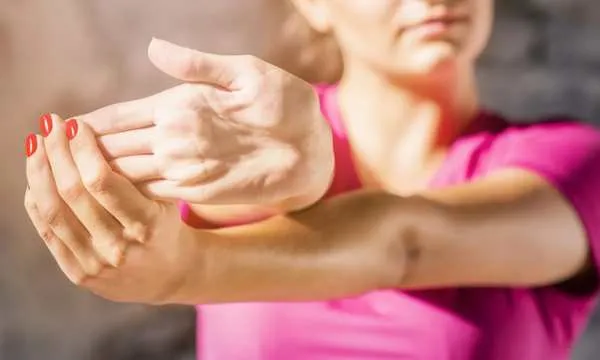Creative activities can be your calm, restorative path, offering balance and renewal when your hands and mind need a gentle reset.
Ad
After a day of caring for others, it is essential to restore your own energy with gentle, enjoyable practices.
In this guide, you will find accessible ideas that respect your hands, shoulders, and posture, while also refreshing your focus.
Ad
Each activity features simple steps so you can start without pressure and build a rhythm that feels natural.
Let this be your supportive companion for calm, clarity, and sustainable self-care.
Ad
How to Choose Creative Activities that Respect your Body
Your work asks a lot of your hands, wrists, and back, so, when you choose a new creative outlet, prioritize options that are gentle on joints, allow flexible duration, and encourage relaxed breathing.
-
Start small: 10–15 minutes is enough to reset your mood
-
Favor low-strain tools, like soft pencils, broad brushes, or lightweight planters
-
Alternate seated and standing activities to balance posture
-
Choose calming sensory inputs: soft colors, natural textures, mellow sounds
-
Keep supplies visible and ready to reduce friction and support habits
-
Track how your hands and shoulders feel during and after each session
Consider energy levels, available space, and what genuinely feels fun because consistency grows when you enjoy the process.

Painting and Drawing: Colors that Calm the Mind
Color and simple lines can settle mental chatter and invite presence. Painting and drawing promote gentle focus, rhythmic breathing, and a playful mindset that softens daily stress and because you set the pace, you can choose short, relaxing sessions that do not strain the hands.
How to begin:
-
Gather basic supplies like a sketchbook, soft graphite pencils, or watercolors with a broad brush.
-
Pick a calming theme such as leaves, waves, or skies.
-
Set a friendly boundary: just one page or a 10-minute session.
-
Focus on process over results, letting color flow and shapes emerge without judgment.
Ergonomics matter: keep shoulders dropped, use a table at comfortable height, and switch grips to reduce pressure. These small adjustments help ensure your creative activities remain supportive, not taxing. If you feel tension, pause and stretch before continuing.
Try a color-breath routine: inhale and trace a slow line, exhale and add a gentle wash, two to three cycles are enough to shift your state.
Indoor Gardens and Plants: Green Therapy for Massage Therapists
Bringing a little nature indoors can refresh attention and brighten your workspace. Caring for plants offers restful moments that are light on the hands and soothing for the eyes, as the quiet ritual of watering, pruning, and observing growth can reduce stress and support a balanced mood.
How to begin:
-
Choose low-maintenance plants like pothos, snake plant, or ZZ plant, which tolerate varied light and schedules.
-
Set a weekly check-in to water, rotate pots, and wipe leaves.
-
Place a small plant near your break area to encourage mindful pauses between sessions.
To make this a set of creative activities, experiment with pot colors, simple terracotta painting, or arranging leaves for pleasing contrast.
Keep tasks short and enjoyable, and use lightweight tools to protect your wrists, over time, this living corner becomes a gentle visual reminder to breathe.
Create a tiny green corner with three plants of different heights for visual harmony and easy care.
Guided Meditation and Meditative Art to Reduce Stress
Guided meditation helps release muscular tension and quiet the mind, while meditative art, like mandalas or repetitive patterns, keeps the hands moving in a light, non-strenuous way. Together, they offer a steady path to relaxation and can fit into short windows of time.
How to begin:
-
Choose a brief audio session from a reputable mindfulness app or a trusted educator.
-
Continue the calm with a page of simple patterns: dots, concentric circles, or gentle waves.
-
Match each exhale with a stroke to deepen the soothing effect.
Some days, you may prefer only breath and listening, other days, a page of patterns feels right. Let your creative activities flex with your energy and schedule, because the key is kindness and repetition, not perfection.
Keep a compact kit, pen, small notebook, and headphones, in your bag so you can practice anywhere.
Music and Active Listening to Relax Body and Mind
Music can shift your state within minutes, easing mental load and inviting gentle movement. Active listening giving full attention to melody, rhythm, and texture, encourages mindfulness without effort. It is a friendly practice for breaks, commutes, or evening wind-down.
How to begin:
-
Curate two playlists, one for pre-session grounding and another for post-session release.
-
Sit comfortably, close your eyes, and follow a single instrument through the track.
-
If you like, add slow, small stretches that feel safe and natural.
As one of your simplest creative activities, active listening pairs well with tea, dim lighting, or a warm compress on the shoulders. Keep volume gentle to protect hearing, and pause if your body asks for rest and notice how your breath and mood shift from the first to the last track.
Try a 5-track reset: choose five songs under four minutes each and listen without multitasking and notice your breath at the start and the end.

Relaxing-moment-with-music-(Source-Google)
Creative Writing and Gratitude Journaling to Renew Energy
Writing can organize thoughts and release emotion in a safe, structured way. A short, gentle practice, like gratitude journaling, can brighten perspective and remind you why your care matters and over time, this cultivates resilience and steady motivation.
How to begin:
-
Write one sentence about something you noticed during a session, one about a small success, and one about a personal intention.
-
Keep the notebook on your workstation to make the practice simple and visible.
To weave this into your creative activities, add a gentle free-write once a week: set a 5-minute timer and describe a calming scene or a kindness you offered.
If your hands are tired, try voice-to-text to reduce strain and end by listing one step you will take to care for yourself tomorrow.
How to Build the Habit of doing Creative Activities in your Daily Life
Treat your creative activities like gentle appointments with yourself. Track streaks on a small calendar, celebrate tiny wins, and adjust the plan when your schedule shifts. The goal is consistency, not pressure.
-
Anchor the activity to an existing routine: after cleaning your table, draw for 5 minutes
-
Prepare a grab-and-go kit: small sketchbook, pen, earphones, and a gentle playlist
-
Set a friendly minimum: even 5 minutes counts and keeps momentum alive
-
Use visual cues: leave brushes, a plant mister, or your journal in sight
-
Schedule a weekly variety day to prevent boredom and support balanced strain
-
Reflect briefly: note how your hands, shoulders, and mood feel after each session
Small, kind rituals practiced often become strong roots for calm and clarity.
Caring for others starts with caring for yourself. Choose one simple practice and make it a gentle part of your day. With time, these creative rituals will restore focus, ease tension, and support sustainable energy for your hands and heart.


